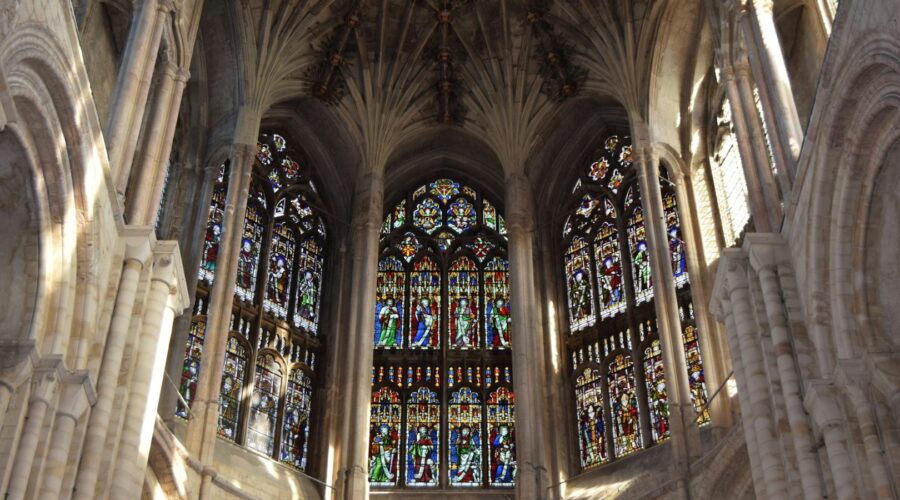Introduction
Cathedral basilicas, with their towering spires, intricate stained glass windows, and awe-inspiring interiors, are testaments to human ingenuity and spiritual devotion. These monumental structures have played a pivotal role in shaping faith, culture, and architecture for centuries. In this comprehensive guide, we delve into the multifaceted aspects of cathedral basilicas, exploring their history, design, significance, and iconic examples from around the globe.
History and Evolution
The origins of cathedral basilicas can be traced back to the early Christian era. The term “basilica” initially referred to a large public building in ancient Rome used for various civic and administrative functions. As Christianity grew, basilicas were adapted into places of worship due to their ample space and rectangular floor plan.
During the Middle Ages, cathedral basilicas evolved into architectural masterpieces. The incorporation of Gothic elements such as pointed arches, vaulted ceilings, and elaborate ornamentation transformed them into symbols of power and grandeur. Over time, cathedral basilicas became centers of religious, political, and cultural life, reflecting the social and economic status of the communities they served.
Architectural Features
Cathedral basilicas are typically characterized by their:
1. Floor Plan
Most cathedral basilicas follow a rectangular or cruciform floor plan. They comprise a central nave, flanked by side aisles that lead to a transept, creating a cross-shaped structure.
2. Facade and Towers
The facade of a cathedral basilica often features an elaborate main entrance, flanked by towers that frame the building and provide a dramatic focal point.
3. Spires and Steeples
Many cathedral basilicas are adorned with soaring spires or steeples that rise above the surrounding cityscape, serving as beacons of spirituality and architectural prowess.
4. Windows
Cathedral basilicas are renowned for their magnificent stained glass windows, which depict biblical scenes, saints, and other religious imagery, filling the interiors with vibrant colors and ethereal light.
5. Interior Decoration
The interiors of cathedral basilicas are often adorned with opulent decorations, including marble floors, frescoes, sculptures, and lavish altars. These elements contribute to the grandiose and awe-inspiring ambiance.
Significance and Impact
Cathedral basilicas have had a profound impact on societies throughout history:
1. Religious Centers
Cathedral basilicas are the principal churches of a diocese, serving as the seat of the bishop or archbishop. They are focal points for worship, prayer, and sacraments.
2. Cultural Hubs
Cathedral basilicas have often been the setting for major religious and cultural events, including coronations, weddings, and festivals. They have also played a significant role in education and the arts.
3. Architectural Landmarks
Cathedral basilicas are recognized as architectural masterpieces that embody the technical advancements and artistic sensibilities of their time. They have inspired countless artists, architects, and engineers.
4. Symbols of Power and Prestige
Throughout history, cathedral basilicas have been commissioned and built by rulers and wealthy patrons to demonstrate their devotion, power, and status within the community.
Iconic Examples
Some of the most famous and awe-inspiring cathedral basilicas in the world include:
1. St. Peter’s Basilica, Rome, Italy
Considered one of the holiest Catholic churches, St. Peter’s Basilica is an architectural marvel with its iconic dome and vast interior, housing priceless works of art.
2. Notre Dame Cathedral, Paris, France
A symbol of Gothic architecture, Notre Dame Cathedral is renowned for its intricate facade, flying buttresses, and breathtaking stained glass windows.
3. Westminster Abbey, London, United Kingdom
A UNESCO World Heritage Site, Westminster Abbey is a historic cathedral where British monarchs have been crowned for centuries. Its Gothic architecture and intricate interior are a testament to its enduring beauty.
4. Cologne Cathedral, Germany
One of the largest Gothic churches in the world, Cologne Cathedral is characterized by its soaring spires, massive stained glass windows, and elaborate sculptures.
5. Seville Cathedral, Spain
The largest Gothic cathedral in the world, Seville Cathedral is a masterpiece of Islamic and Christian architecture, featuring a breathtaking interior adorned with intricate decorations.
Conclusion
Cathedral basilicas are architectural wonders that have shaped the fabric of our civilization for centuries. Their awe-inspiring interiors, iconic facades, and historical significance continue to captivate pilgrims, tourists, and art enthusiasts alike. As we delve deeper into the world of cathedral basilicas, we gain a profound appreciation for the human creativity, spirituality, and architectural ingenuity that have given us these magnificent structures.


Leave a Reply